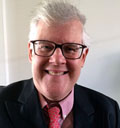Special to WorldTribune.com
Germany’s reunification is now history.
It seemed not so long ago that the Berlin Wall had fallen in 1989, Central European countries had regained their sovereignty through the freedom tsunami sweeping Europe, and unimaginably on Oct. 3, 1990, West and East Germany, the front line frontier of a very Cold War had reunified in peace and freedom.
Almost as in a fairy tale the two separate states, the Federal Republic of Germany (West) and the communist German Democratic Republic (East), had almost magically merged into one nation without violence, with the legal blessing of the WWII Allied powers, and through the political foresight of German Chancellor Helmut Kohl.

Perhaps the most enduring image of divided Germany stood as the Berlin Wall, built in 1961.
The Wall separated free West Berlin controlled by the Americans, British and French from Soviet controlled East Berlin. The Wall provided a vivid juxtaposition of a divided land; it was designed to keep people inside the worker’s paradise and stop others from trying to flee.
Indeed between 1949 and 1961 over 2.7 million people fled East Germany for the West. In Berlin itself over 171 were killed at the Wall while escaping.
I first visited the divided German capital in the late 1970’s; the once grand cosmopolitan city remained a stunning tableaux in black and white. While the Wall brutally separated families and neighbors, it equally illuminated the vivid contrast between prosperous West Berlin and the gray, dreary and shoddy East Berlin.
Though the Eastern side of the city was more historic and culturally significant, there was still bomb damage from the war. Eerie lights along the Wall at night added a creepy context.
Though the same people, West and East Germany had fundamentally different state personalities; the Federal Republic was aligned with the West, politically free and with a prosperous turbo-charged market economy. East Germany was the poor cousin steeped in socialism, and part of the Soviet sphere. Ironically, East Germany nonetheless was the jewel in the crown of the socialist states and had a far better standard of living than did Poland, Hungary or Russia itself!
Complicated economic and social comparisons aside, there’s a novel way to understand the contrast between West and East Germany; their celebrated automobiles.
West Germany was known for its iconic Mercedes-Benz cars and trucks. East Germany sported the Trabant, a small fiberglass 25 horsepower auto which chugged along belching a blue-grey smoke.
Citizens in West Germany’s consumer society had access to the Mercedes line and it was not uncommon to own one.
In the East there was a multi-year waiting list to buy a treasured Trabi — which came in the dazzling colors of white, penicillin green and black. Enough said!
In June 1987, President Ronald Reagan, while visiting Berlin and speaking at the Brandenburg Gate demanded, “Mr. Gorbachev Tear down this Wall.”
Reagan’s comments touched off a cascade of shock, criticism, and condescension and from a political class who viewed the president’s call as an incendiary challenge to an accepted status quo; the Wall. Elites cringed.
But then came the unexpected Freedom Tsunami of Autumn 1989 when Central Europe changed.
By 1990, the geopolitical stars were aligned perfectly as the four Allied powers, the victors over Naziism in WWII, acted as cautious midwives to the creation of a reunited Germany.
German Consul-General in New York David Gill who grew up in East Germany, described these epoch socio/political events as a “peaceful revolution.”
Though economically costly, Kohl’s political choice for unity was the right one. But despite the progress, there’s still political angst among the 17 million Easterners; some speak of a psychological divide between East and West Germany.
Former U.S. Secretary of State James Baker who was directly tasked by President George Bush in the process of reunification remarked recently that he wishes to, “Thank the people of Germany for the strong friendship they have given to the United States in the past three decades, and congratulate them for their leadership on the world stage. The peace and prosperity Germany has built and maintained are clear proof that freedom does work.”
Emily Haber, Germany’s ambassador to the United States stresses, “The trust and friendship of our neighbors and allies, first and foremost the U.S., helped bring about this unique success story. We will never forget America’s support. Thirty years later, we celebrate that historic day and say, ‘Danke!’ to the American people.”
Reunification’s success was anchored in close and enduring transatlantic ties; let’s refocus on renewing those vital links of friendship.
John J. Metzler is a United Nations correspondent covering diplomatic and defense issues. He is the author of Divided Dynamism the Diplomacy of Separated Nations: Germany, Korea, China (2014). [See pre-2011 Archives]

 By
By